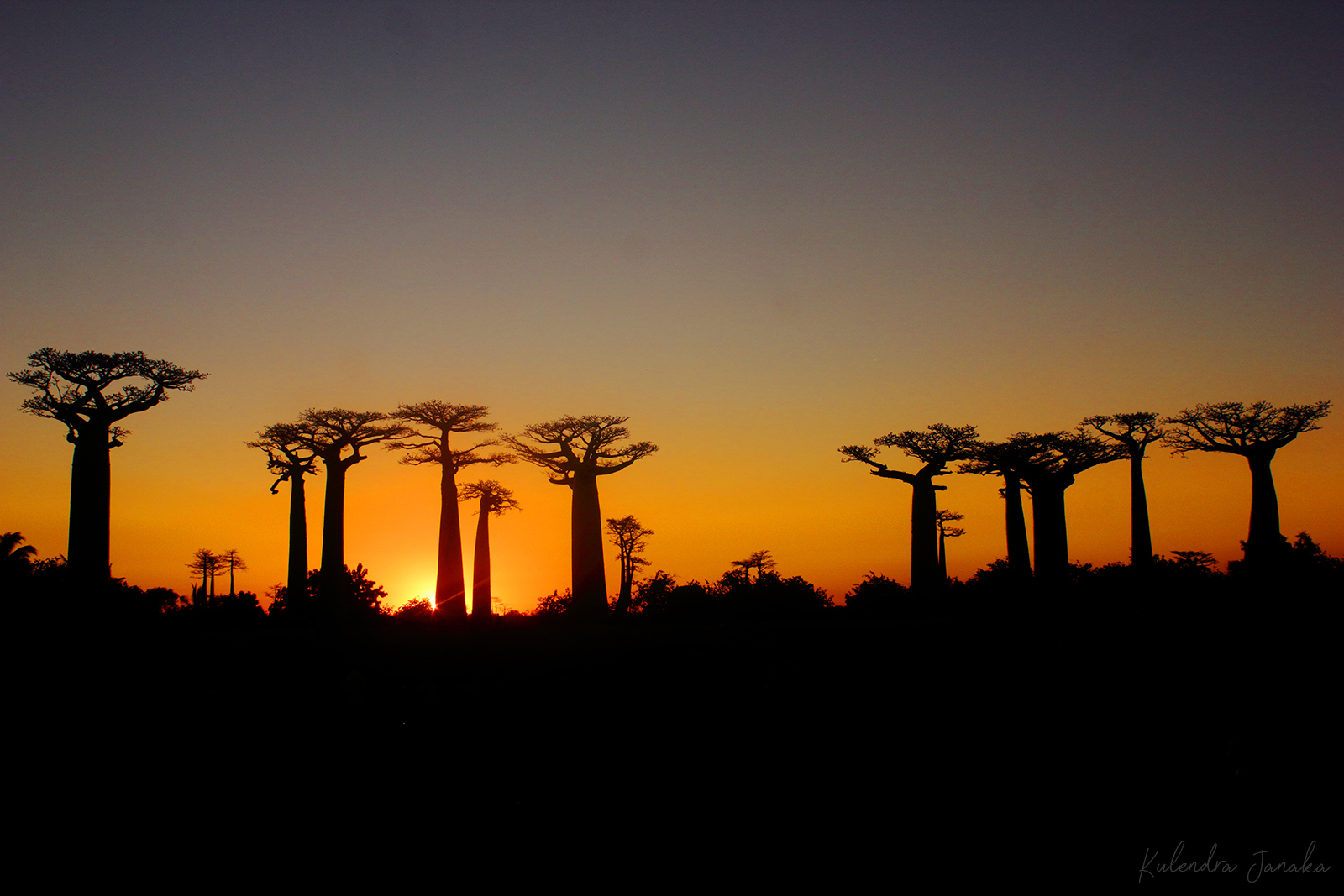The Eighth Continent – Madagascar – Part 5: Avenue of the Baobabs
On the way to the Kirindy Private Reserve from Morondava, or rather on the route RN8 that leads to Belo-Tsiribihina, is the Avenue of the Baobabs. It is a stretch of road perhaps 100-200m long that is flanked on either side by towering Baobab trees.
When I spoke about my decision to visit Madagascar with my friends, one of the first things I was told was that I had to somehow see the Baobab trees. As I browsed through the information I could find on Baobabs, the Avenue of the Baobabs stood out for two reasons; Everyone who wrote about it described it as one of the most scenic landscapes they’ve seen (and they had photos to prove it) and it was close enough to the Kirindy Private Reserve, a place I had already decided to visit (little did I know that it was actually on the way to the Kirindy Private Reserve. Google Maps hadn’t been updated at the time.) While I had seen Baobabs before (more on that later), I came to learn that the ones in the Avenue of the Baobabs are endemic to Madagascar and were more majestic looking than the ones I’ve seen.
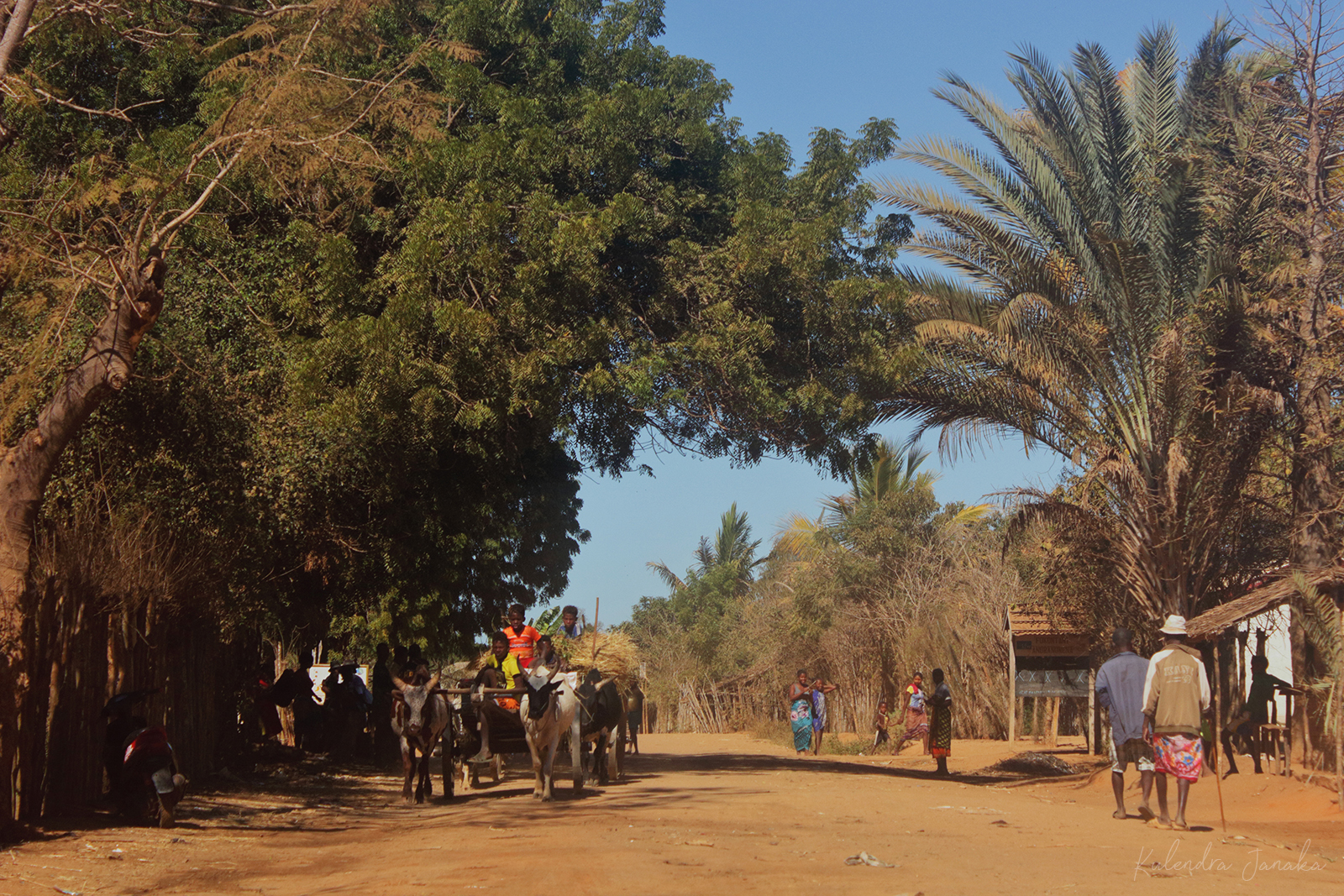
The road leading to the Avenue of Baobabs isn’t completely deserted.
When I read some of the reviews about the place, I was under the impression that the Avenue of the Baobabs is in a deserted road. This wasn’t however, the case. I came across several small villages or settlements, each consisting of about 15-20 houses, on my way to visit the Avenue. While I could not converse with them, I learned from my guide in Kirindy that slash and burn agriculture and livestock farming are the main occupations of the villagers.
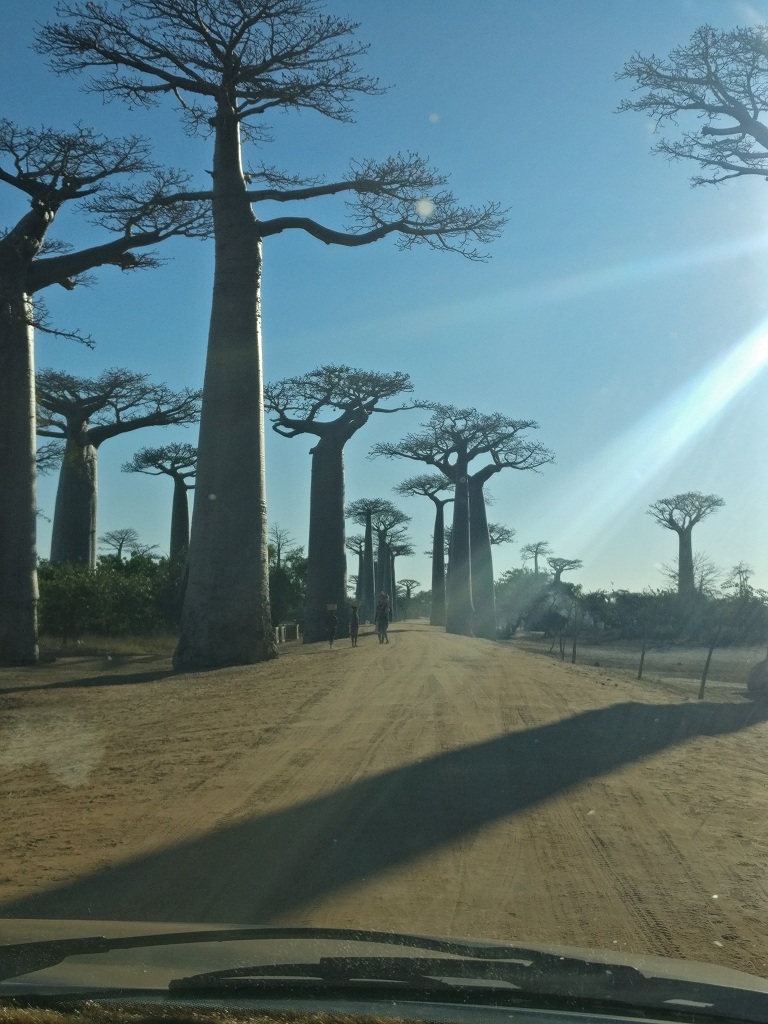
Avenue of the Baobabs
When I first saw the Avenue of Baobabs, it wasn’t that flattering. As we drove down to Kirindy Private Forest, my driver who spoke only very basic English, suddenly pointed ahead of us and exclaimed “Baobabs”. My first take was that he was just pointing out to me that there were Baobab trees ahead of us. It took a little bit of back and forth with my extremely poor French and his broken English to figure out that this was indeed the infamous Avenue of the Baobabs. My decision to revisit the location at the sunset was definitely worth the extra price I paid.
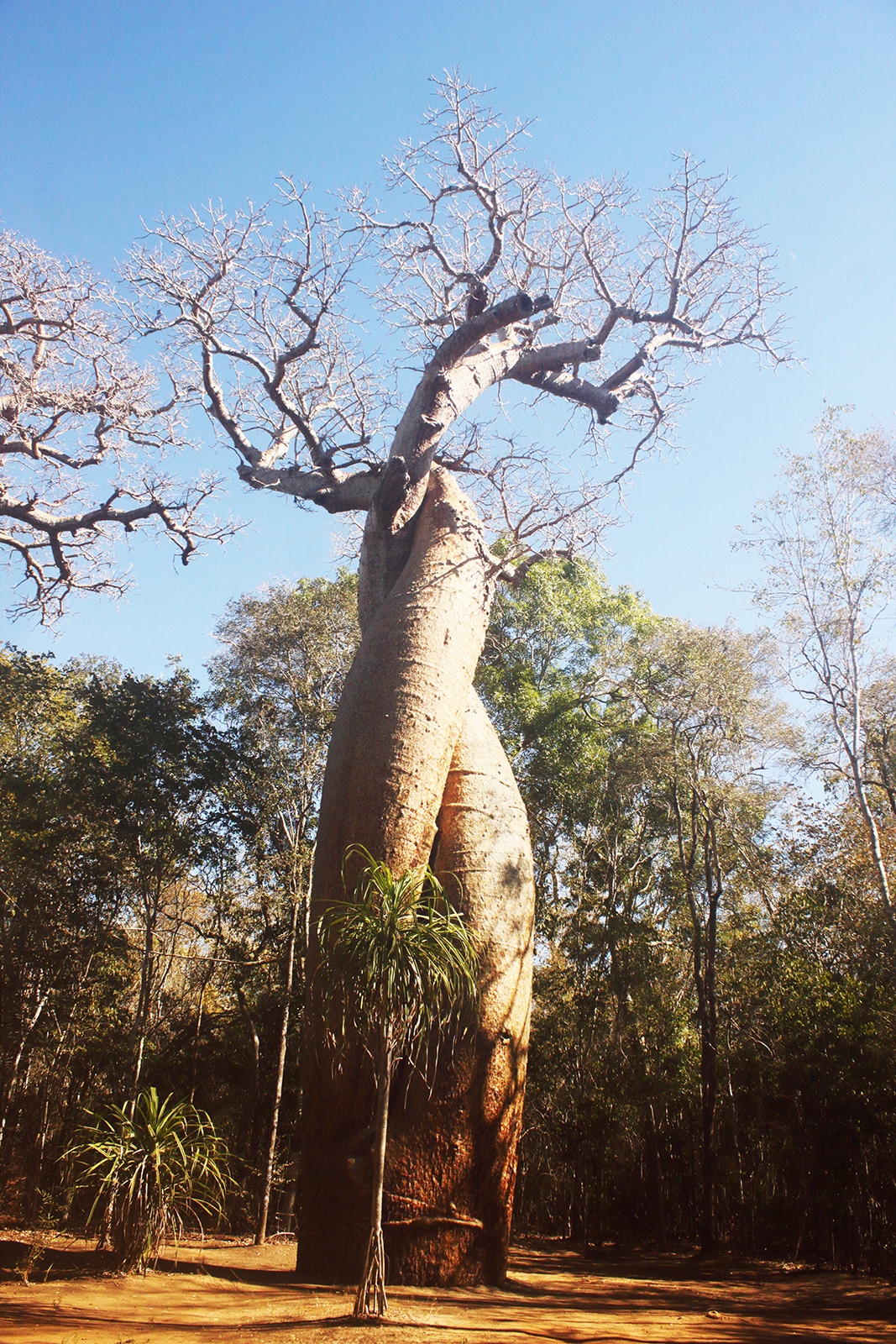
Baobabs in Love
Few kilometers down the road towards Belo-Tsiribihina is the odd pair of Baobabs known as Baobabs in Love. This is a natural phenomena where two Baobab plants that were quite nearby grew up with their trunks entangled. While my guide wanted me to visit the place because he thought it was special, I don’t necessarily see that there is something worthwhile to see. But that could be just my opinion.
The Baobab tree is an interesting looking tree. During the dry season, all the leaves of the tree fall out leaving only the towering trunk and the branches that almost resemble the roots of a tree. Arabian traders who came across Baobab trees called them the Devil’s Tree and have a story about how a demon was once so angry that he uprooted the trees and threw them away. The trees landed upside down, with their roots in the air.
There are several species of Baobab trees in the world. The ones that are found in the Avenue of Baobabs are called Grandidieri’s Baobab (Adansonia grandidieri) after the famous zoologist, geographer and ethnologist, Guillaume Grandidier, who did extensive studies of the animals and people in Madagascar. Out of the nine species of Baobab trees present today, six are native to Madagascar. One of the species, the Australian Baobab (Adansonia gregorii) is native to Australia. Only one species, African Baobab (Adansonia digitata), is found outside of Africa and Australia.
There are many uses of the Baobab tree for humans. Fruit of the Baobab tree can be eaten fresh or the dry pulp of the fruit can be mixed with water or milk to produce a Baobab drink. In Australia, Aborigines use the root of the tree to produce fibers which are then woven in to string and rope. In some countries the dry pulp is also used to make porridge, used as a fermenting agent for alcohol brewed from sugarcane and also used as an ingredient in jams. The European Union and USA have now approved Baobab powder as an approved food ingredient.
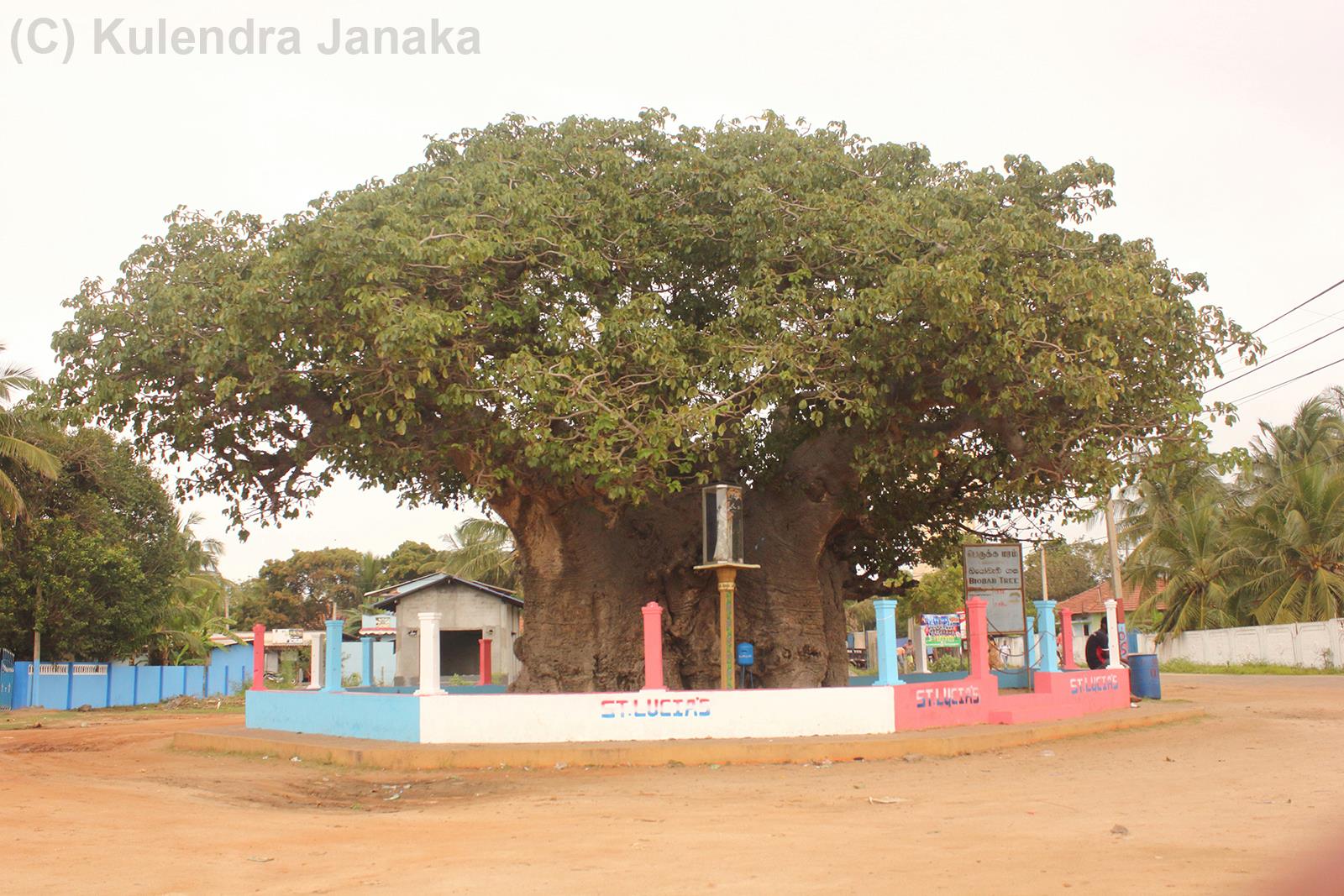
Baobab tree in Pallimunai, Mannar, Sri Lanka 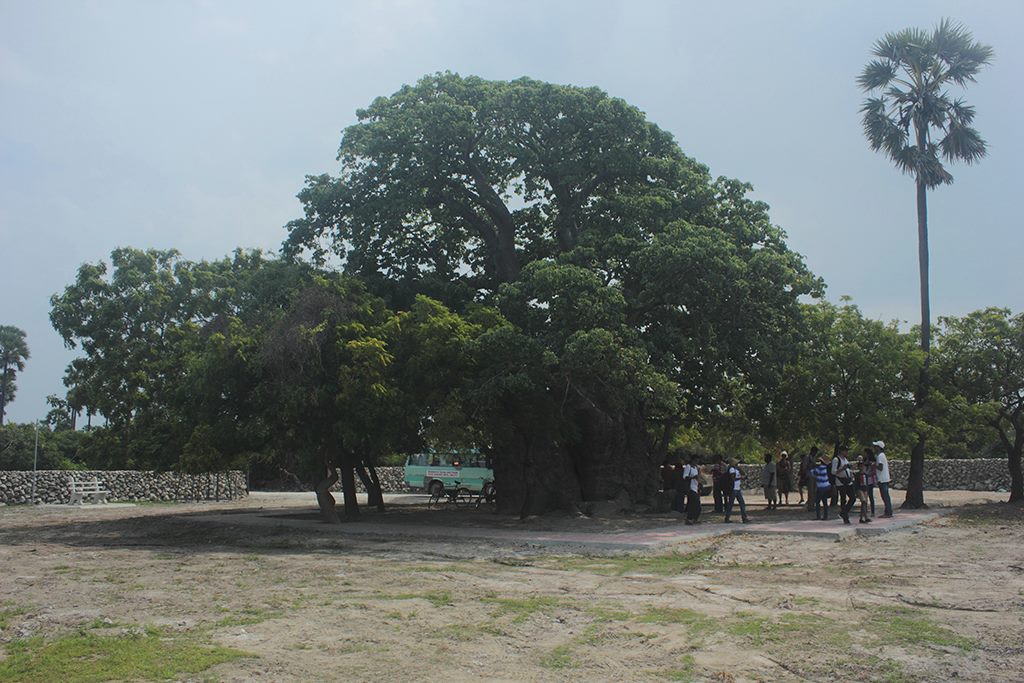
Baobab tree in Delft, Sri Lanka
While this was the first time I saw Baobabs up close in Africa, this wasn’t the first time I’ve seen them. The very first time I saw a Baobab tree in real life was in my own country, Sri Lanka. There are two somewhat well known Baobab trees in Sri Lanka located on the North and North East part. As there are no other record of Baobabs in Sri Lanka, these are thought to have been introduced by Arabian traders. As at present, Sri Lanka has a number of Baobabs which are all planted from the seeds of those two trees. I do however, have some reservations about the origin of the first two trees. Looking at the structure of the tree, I am almost ready to bet that these look very similar to the Australian Baobabs.
The global distribution of the Baobabs is also an interesting topic. One of the first theories about Baobab distribution looked at the fact that they are present in mainland Africa, Madagascar and Australia. The theory suggested that the baobabs were present during the time of the Gondwanaland supercontinent and when the continents eventually drifted, the trees drifted with them. This theory was later discredited. Africa and Australia were much closer to the south pole at the time, a climate not at all conducive to Baobab trees. At the same time, while India was much closer to Africa than Australia on the Gondwanaland, there are no native Baobab species found in India.
The leading theories about how Baobabs spread over from Africa suggest that either they were brought over by the human settlers who migrated out of Africa or that the Baobab fruits drifted across the sea. Both of the theories have their shortcomings. There aren’t any major Baobab populations along south and south east Asia. If the human migrations brought it over, shouldn’t we see Baobab growths along the path of the migration? On the other hand, Baobab fruits have a very thin shell that saltwater would have destroyed the seeds long before it landed in Australia.
While we are still trying to decipher how the Baobabs spread across the world, they are facing the threat of extinction due to climate change and deforestation. Having a very slow rate of growth, a Baobab tree could live up to 500 years or more. However this means that if there are no younger generations of trees to take their place, entire clusters of trees which stood for generations, just die off.
But for the moment, they stand tall.
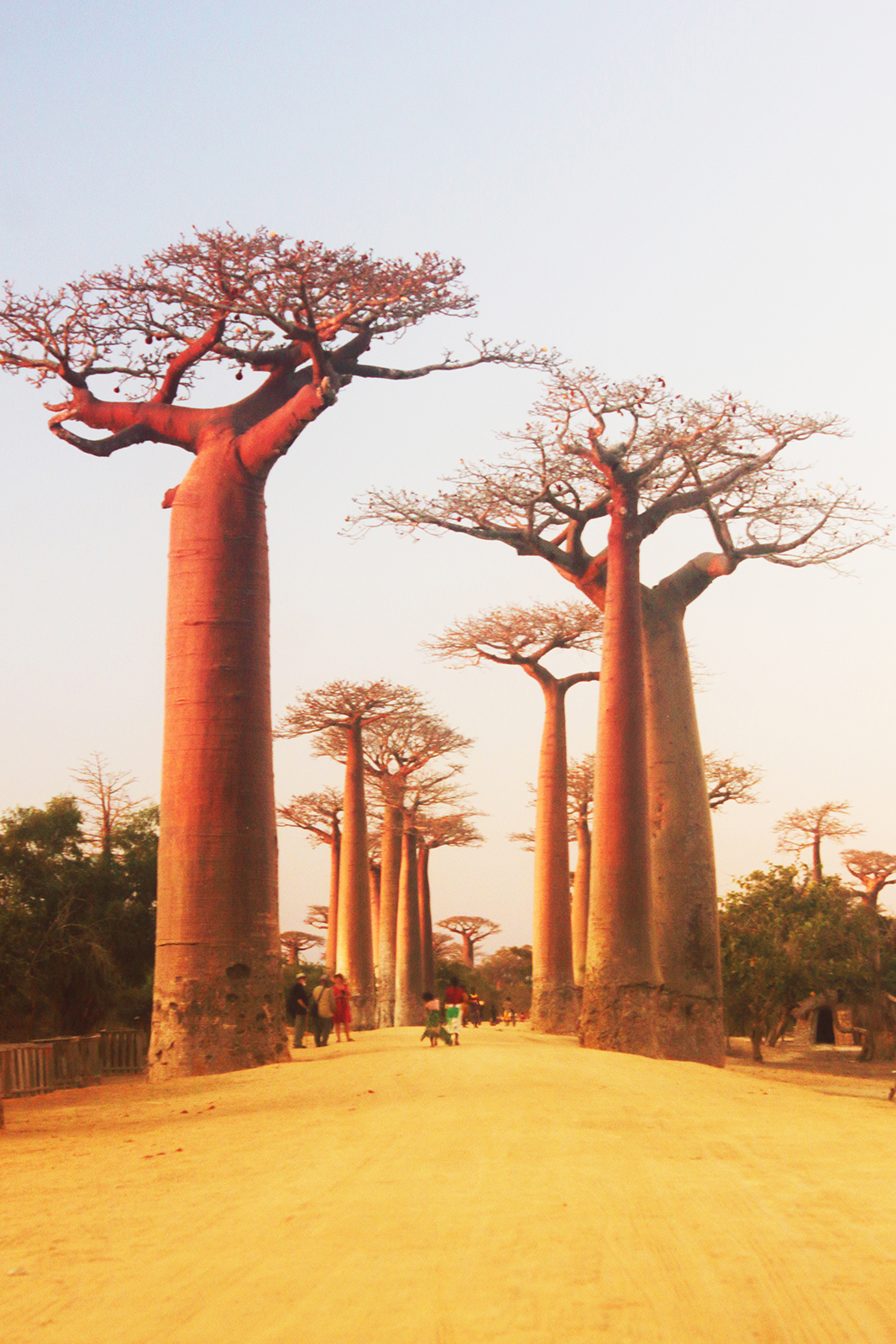
Avenue of the Baobabs.
